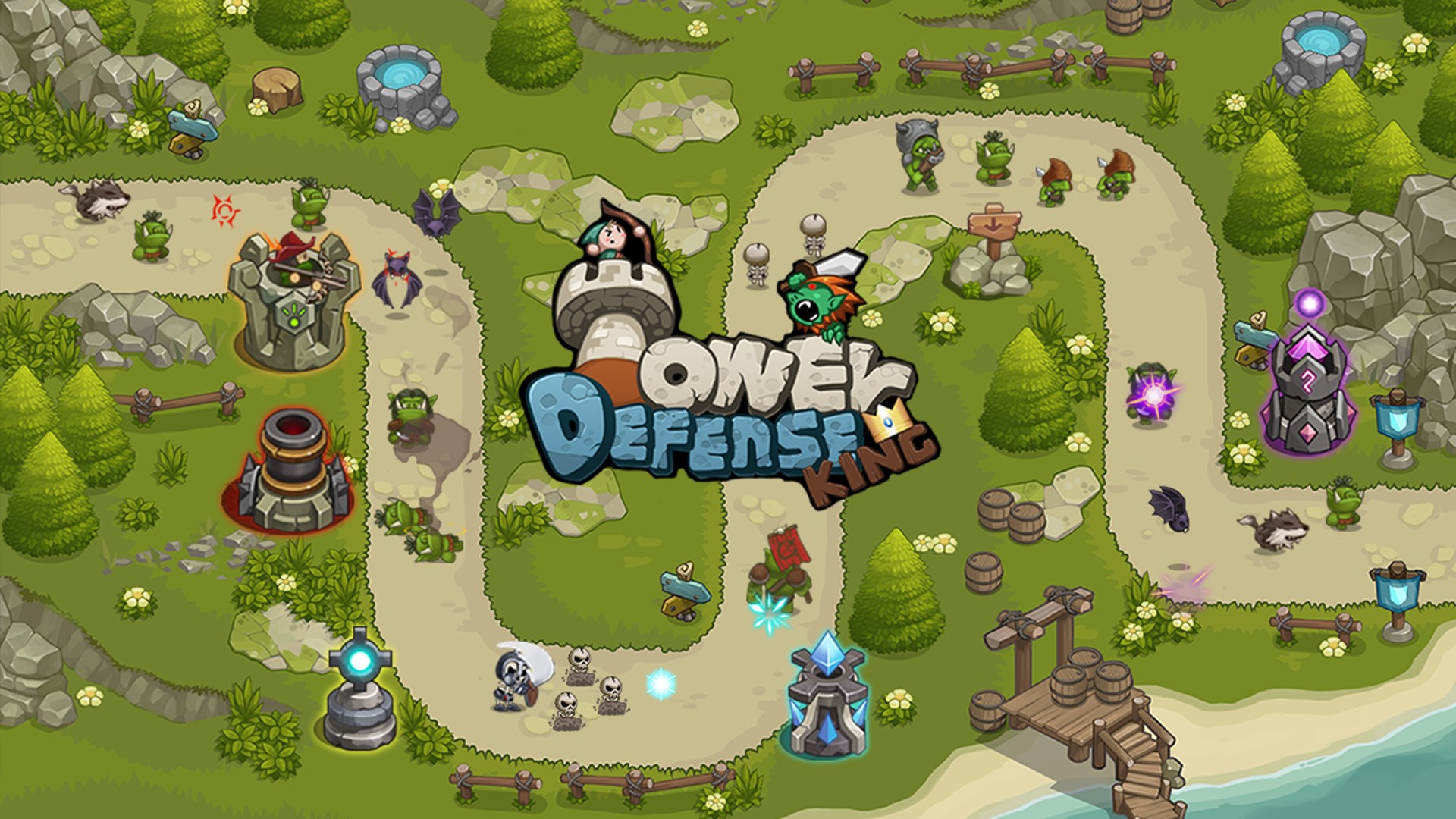Embarking on the journey to create a tower defense game is an exciting adventure filled with endless possibilities. This comprehensive guide will walk you through every step of the process, from conceptualizing your game’s unique mechanics to implementing them into a playable reality. Whether you’re a seasoned developer or a curious beginner, the insights provided here will equip you with the knowledge and tools needed to bring your vision to life. Let’s dive into the world of game development together!
Designing Your Game Map
Designing the game map is a crucial step in creating a tower defense game, as it lays the foundation for gameplay and strategy. The map dictates the flow of enemy units, placement of defensive structures, and ultimately, the player’s tactical decisions. A well-designed map not only challenges the players but also keeps them engaged through varying levels of difficulty and complexity.
When starting with your game map design, consider the path that enemies will take. This path can be fixed, where enemies follow a predetermined route, or open, allowing them to choose their own path based on the game’s AI. The choice between these types influences the player’s strategy significantly. Incorporating obstacles and terrain variations can add depth to the gameplay, providing opportunities for players to strategize and place their towers effectively. It’s also essential to balance aesthetic appeal with functional design to ensure that the map is not only visually engaging but also enhances the game’s playability.
Furthermore, the scaling of levels is critical in maintaining player interest over time. Early stages should introduce the basic mechanics, while later levels can introduce more complex paths, enemy types, and restrictions on tower placements. This progression ensures that players are continuously challenged, preventing the game from becoming monotonous. Testing your map extensively is vital; player feedback can offer invaluable insights into how your map plays out in real-world scenarios, allowing for adjustments that refine gameplay and improve overall experience.
- Path design: Fixed vs. Open paths
- Importance of obstacles and terrain variations
- Balance between aesthetic and functionality
- Scaling difficulty through levels
- Extensive testing and player feedback
Creating Unique Enemy Types
Designing unique enemy types in a Tower Defense game is essential to creating an engaging and strategic gameplay experience. The diversity of enemies not only enriches the game’s world but also challenges the player to think critically and adapt their strategies. To achieve this, enemy variety should go beyond mere cosmetic differences, incorporating distinct abilities, strengths, and weaknesses that interact with the player’s defenses in varied ways. For instance, some enemies might have high resistance to certain types of towers, encouraging players to diversify their tower placements and upgrade paths.
Moreover, the behavior of enemies can significantly impact the gameplay dynamics. Implementing AI that allows enemies to dodge, prioritize targets, or even fight back adds depth to the game, making each encounter unpredictable and thrilling. To further enhance the gameplay, consider introducing special enemies that trigger unique events or challenges when they appear on the battlefield. These could range from a giant boss that requires the player to deploy all their resources to defeat, to a stealthy enemy that temporarily disables the player’s towers.
Lastly, the progression of enemy difficulty should be carefully balanced to maintain a steady increase in challenge while avoiding frustration. This can be achieved by gradually introducing new enemy types and increasing their stats, ensuring that players have time to adjust their strategies and upgrades accordingly. Remember, the goal is to keep the game engaging and rewarding, pushing players to explore new tactics without feeling overwhelmed.
- Implement diverse abilities for enemies to challenge player strategies.
- Introduce special enemies that require unique tactics to defeat.
- Develop enemy AI for more dynamic interactions with player defenses.
- Balance the progression of enemy difficulty to maintain engagement.
- Use enemy variety to enrich the game’s narrative and world-building.
Further Insights on Creating Unique Enemy Types
Delving deeper into the creation of unique enemy types, it’s important to focus on the integration of these enemies within the game’s ecosystem. Each enemy should feel like a part of the world, with its abilities and behaviors reflecting the game’s lore and environment. This cohesion not only enhances the narrative immersion but also provides a framework for designing enemy types that naturally fit into the game’s challenges and storytelling. For instance, an enemy that can camouflage within certain environments can introduce tense moments of anticipation and surprise, enriching the overall gameplay experience.
Enhancing Gameplay Through Enemy Design
Incorporating thematic elements into enemy design can significantly amplify the game’s atmosphere and player immersion. Visual and auditory cues associated with different enemy types can alert the player to new threats and necessitate quick strategic adjustments, adding layers of complexity and engagement to the tower defense experience. Ultimately, the key to creating compelling enemy types lies in combining imaginative design with thoughtful integration into the game’s mechanics and narrative, ensuring each enemy introduces a fresh challenge and contributes to the richness of the gameplay.
Developing Tower Varieties and Upgrades
Creating a compelling Tower Defense game hinges on the strategic depth offered by the variety of towers and their upgrade paths. Players should feel a sense of progression and increasing power as they advance through the game. Initially, the focus should be on designing a balanced mix of tower types, each serving unique roles, such as damage dealers, slowers, or area-of-effect (AOE) towers. This diversity ensures that players must think strategically about placement and tower choice to effectively counter the oncoming waves of enemies.
Upgrades play a pivotal role in maintaining player engagement. Each tower type should offer several upgrade paths that allow players to specialize their towers in specific roles. For instance, a basic damage tower could be upgraded to either deal more significant damage to a single target or lesser damage to multiple targets. These choices lead to more dynamic gameplay, as players must continually adapt their strategies based on the threats they face and the resources available to them.
Key Considerations for Tower Design and Upgrade Systems
When developing towers and their upgrades, consider the following key aspects to enhance gameplay:
- Balance between cost and effectiveness of each tower and upgrade.
- Variety in tower functions to encourage strategic planning over mere spamming.
- Impactful upgrades that feel rewarding and offer tangible benefits.
- Visual and auditory feedback to signify upgrades and make them feel satisfying.
- Integration with the game’s theme and storyline to enhance immersion.
Implementing Game Levels and Difficulty
Creating a tower defense game that captivates players requires careful consideration of game levels and difficulty. The core of engaging gameplay lies in presenting challenges that are neither too easy nor insurmountably hard. Start by designing a variety of levels that gradually introduce the game mechanics to the players. The initial levels should focus on teaching the basics, allowing players to get comfortable with the controls and the game’s objectives.
As players progress, increase the difficulty by introducing new types of enemies, obstacles, and puzzles. This can be achieved by varying the speed, health, and damage of the enemies. Consider implementing adaptive difficulty, where the game adjusts the challenge based on the player’s performance. This ensures that your game remains accessible to beginners while still offering a substantial challenge to more experienced players.
Testing is crucial in balancing difficulty. Use playtesting feedback to adjust levels, ensuring a smooth difficulty curve. Remember, the goal is to keep players engaged by offering a satisfying challenge that encourages them to keep playing without feeling frustrated.
Key Strategies for Level Design and Difficulty Balancing
When designing levels and setting difficulty, it’s important to focus on variety, progression, and player feedback. Incorporating different themes and environments for each level can keep the gameplay fresh and engaging. Ensure that the progression feels natural and rewarding, with each level building upon the last. Feedback from early playtests can be invaluable in fine-tuning the difficulty, making the game challenging yet fair.
- Start with simple levels to teach the basic mechanics.
- Increase complexity by introducing new challenges and enemies.
- Implement adaptive difficulty to cater to a wide range of players.
- Use playtesting to find the right balance and adjust difficulty.
- Incorporate various themes and environments to maintain interest.
Programming Core Mechanics and AI
Creating a tower defense game involves the intricate task of programming core mechanics and developing artificial intelligence (AI) that challenges but doesn’t overwhelm the player. At the heart of these mechanics lies the pathfinding algorithm, which allows enemy units to navigate the map and attempt to reach the player’s base. Implementing a robust pathfinding system, such as A* (A-Star), ensures that enemies can find the shortest path to their target while avoiding obstacles, providing a dynamic gaming experience.
The construction and upgrading of towers form another cornerstone of gameplay. Coding these features requires attention to balance and progression, ensuring that each tower type is unique and serves a specific purpose. Whether it’s slowing down enemies, dealing area damage, or targeting specific types of enemies, each tower’s abilities should be carefully designed and balanced to encourage strategic placement by the player. Additionally, the game’s AI can be programmed to adapt to the player’s defense strategies, increasing its difficulty level and introducing new challenges as the game progresses, keeping the gameplay engaging.
Enemy AI behavior is also critical to a tower defense game’s success. Beyond merely marching towards the player’s base, enemy units can exhibit a variety of behaviors, such as dodging attacks, targeting specific towers, or even counter-attacking. Programming enemy AI to have different strategies and weaknesses introduces depth to the gameplay, requiring players to think tactically and plan their tower placements and upgrades strategically.
Enhancing Gameplay Through Advanced AI Techniques
Incorporating advanced AI techniques can significantly enhance the gameplay experience in tower defense games. Techniques such as machine learning can be used to analyze player strategies and adjust the game’s difficulty in real-time, ensuring a consistently challenging experience. Procedural content generation can also be employed to create unique maps and enemy wave patterns, adding to the game’s replayability.
Fine-tuning AI for a Balanced Game Experience
Developing a balanced AI requires a careful approach to ensure that the game remains challenging but fair. This involves not only adjusting the AI’s difficulty in response to the player’s success but also ensuring that the game provides sufficient feedback and opportunities for the player to learn and adapt their strategies. A well-tuned AI contributes to a rewarding game experience, where victories feel earned, and defeats become opportunities for learning rather than sources of frustration.
- Implementing a dynamic pathfinding system for enemy units.
- Designing unique and balanced towers with upgrade paths.
- Creating adaptive enemy AI with various strategies.
- Incorporating advanced AI techniques for enhanced gameplay.
- Fine-tuning the game’s AI for a balanced experience.
In conclusion, the development of core mechanics and AI in a tower defense game is a complex but rewarding process. It requires a deep understanding of game design principles and player psychology to create a game that is both challenging and enjoyable. With careful planning, creativity, and attention to detail, developers can craft engaging tower defense games that players will return to time and again.




